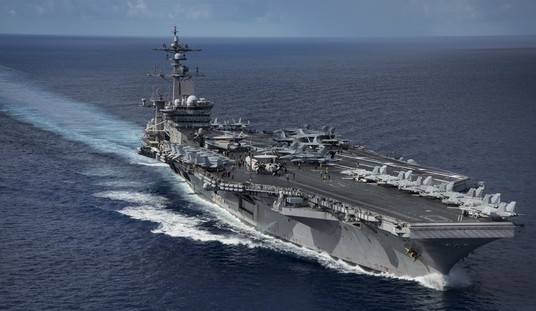Moscow has spoken out about the Syrian jetted dropped from the sky by the United States Military and they are none too thrilled, but their anger is the stuff of theatrics. RedState’s Streiff gave a thorough overview of the situation and asks the pivotal question
On the whole, we can expect this to result in nothing. The deconfliction channel will be quietly reestablished because the Russians have more to lose than the Syrians by not playing. The real question is whether this modifies the behavior of the Russians and Syrians or inspires them to seek retaliation.
All the parsing of words over US enforced “deconfliction zones” vs Russian suggested “deescalation zones” are a matter of labeling. During last year’s presidential election they were referred to as “No-fly zones” and were quite a hot topic for partisan bickering. Unlike in 2016, none of this is being done for the cameras and now the rubber has been formally introduced to the road. So, what are Russia’s motivations and options?
Russia’s mission in Damascus has little to do with a simmering sectarian divide that is very close to boiling over into a full-scale regional conflict involving nations not proxies but more to do with showcasing its weapons on the global stage and selling their brand of security and stability. In September of 2016, during an Obama State Department brokered “ceasing of hostilities,” Moscow was so threatened by the words of, then Secretary of state, John Kerry that their response to the “agreement” was to send their only aircraft carrier off the coast of Syria. Foreign Policy Magazine reported on the move and put it firmly in context.
The Soviet-built Indian carrier INS Vikramaditya and the INS Vikrant (being built in an Indian shipyard) both use Russian MiG-29Ks, but the Indian government has a long list of complaints over the performance of the aircraft. New Delhi shelled out $2.2 billion for 45 fighters in 2004 and 2010, but the planes have suffered a litany of problems, from faulty engines to poor flight availability, and the government has pushed back hard against Moscow.
And
A successful combat deployment of the Russian MiG-29s might assuage some of India’s concerns, once it sees what the plane can do in action.
That’s Moscow’s motivation, to show the world their weapons are worth buying — a question that is never asked of American made weapons because they are the industry gold standard — and Russia wants in on the market cornered by United States arms manufacturing. There is no debate on which country’s weapons are the better purchase and engaging in direct conflict with the United States would completely ruin their efforts to gain a bigger share of the arms market. Why would nations around the world looking to beef up their military place an order for more Russian jets after seeing them decimated in the skies of Syria?
And they most certainly will be destroyed if Moscow continues to choose the path of escalation. It is not a wise move for them or their arms industry which has already looked like a bush-league upstart who rattles nuclear sabers anytime America bristles at their aggression in Syria. The reality is stark for Moscow: be humiliated in Syria or cause a nuclear holocaust, but even they are not so nihilistic, rather just less competent than their American rivals.
#BREAKING: A Russian MiG-29K jet has crashed into the Mediterranean Sea on landing according to US officials pic.twitter.com/LP52Yqi1qs
— Amichai Stein (@AmichaiStein1) November 14, 2016
Moscow’s Options
The Russians have a hard choice to make here and they have 3 options. First, is to back up their bluster which means engaging the United States directly in the air and having their force in Syria as well as their client states destroyed in quick fashion. Not a good look for Moscow’s brand of security and stability that they are trying to sell to the global community.
Moscow’s second option is to continue with the laughable “talks” in Anstana, Kazakhstan where the US has been invited to the meeting between Moscow, Tehran, and Ankara as an “observer” only, in July. That plan is the same nonsense these emboldened regional actors tried, with some success, to use against the Obama administration — something both Secretary of State Tillerson and Secretary of Defense Mattis likely won’t go for. The risk here is that Moscow can’t control its client states and those clients could provoke action from the US-led coalition which, again, would prove what they’re selling an inferior product.
Third, and probably wisest of the 3 options, is to quietly, but firmly recognize and respect the boundaries the United States has set forth while it completes its mission to destroy the remnants of the Islamic State. This maintains the small share of the arms market Moscow currently has because the world will not see just how inferior their product is and preserves its forces in the event its European neighbors should ever grow tired of Russia meddling in all their affairs.
Moscow doesn’t care about the Shia-Sunni sectarianism or the Iranians’ national dream of a land route from their homeland to the Mediterranean. It cares about money, retaining its naval presence in the harbor of Tartus, and returning to the global stage as a forced to be reckoned with in the arms industry. Risking it all to protect what is left of the Syrian government would be a terrible business decision that will cost more than money, but also the lives of those they send to sell their brand of security.
Russia should think very long and very hard before it makes its next move and it appears they have done just that.














Join the conversation as a VIP Member